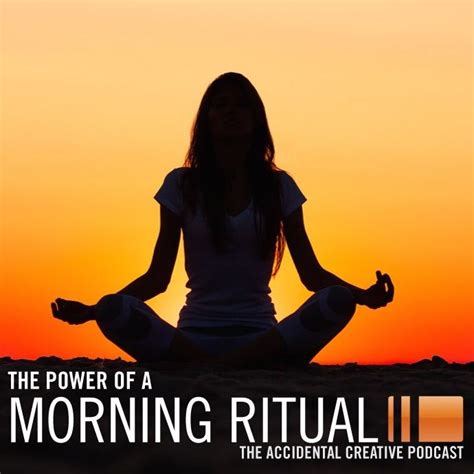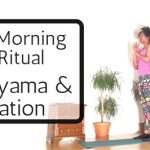Transform Your Mornings with a Yoga Meditation Ritual: A Holistic Guide for Well-being
In today’s fast-paced world, morning routines are often rushed, leaving us feeling scattered and stressed before the day even begins. Incorporating a yoga meditation ritual into your morning routine can help you cultivate mindfulness, physical health, and emotional balance. This comprehensive guide explores the key elements of a morning yoga meditation ritual, its historical context, current practices, and how to implement this powerful habit in your life.
Introduction
Morning is often considered the most important part of the day, setting the tone for productivity, focus, and mood. The yoga meditation ritual offers a structured and balanced way to start your day, combining physical movement with mindfulness and breathwork. Whether you’re a beginner or an advanced practitioner, this ritual can be adapted to your lifestyle and needs. In this guide, we delve into the benefits, historical background, and practical steps to create a sustainable and effective morning routine.
Key Concepts
To fully understand the power of a morning yoga meditation ritual, it’s essential to break down its core elements:
- Yoga: Physical postures (asanas) that align the body and mind, promoting flexibility, strength, and balance.
- Meditation: Mindfulness or concentration practices that cultivate inner awareness and mental clarity.
- Breathwork (Pranayama): Conscious control of breathing to enhance energy flow and reduce stress.
- Routine: A structured sequence that integrates all three components, creating a harmonious start to the day.
Each of these components works together to support holistic well-being. While yoga strengthens and aligns the body, meditation sharpens the mind, and breathwork nurtures the spirit. When performed in the morning, this combination offers heightened benefits, preparing you physically, mentally, and emotionally for the day ahead.
Historical Context
The origins of the yoga meditation ritual date back thousands of years to ancient India. Early practitioners understood the importance of integrating mind, body, and breath for holistic health and spiritual growth. In yogic philosophy, the morning is considered an auspicious time for practice, known as the Brahma Muhurta, when the mind is clear, and the environment is quiet. Meditation during this period is believed to yield deeper insight and more significant mental clarity.
Over the centuries, these practices have evolved and adapted to modern life, with various schools of thought emphasizing different aspects of the ritual. However, the core principles of alignment, awareness, and breath have remained unchanged, forming the foundation of many contemporary practices.
Current State Analysis
In recent years, the popularity of morning yoga meditation rituals has surged due to growing interest in mindfulness and holistic health. From busy professionals to students and retirees, people from all walks of life are seeking ways to manage stress, improve focus, and enhance overall well-being.
Various approaches to the ritual have emerged, with some prioritizing physical yoga flows (like Vinyasa or Hatha) and others focusing more on meditation and breathwork. Mobile apps, online classes, and virtual communities now offer accessible ways to learn and practice, regardless of location or time constraints.
However, with this rise in popularity comes challenges such as misinformation or a lack of depth in practice. Many individuals seek quick fixes or superficial practices that may not deliver the long-term benefits of a comprehensive ritual. Therefore, it’s essential to emphasize the importance of consistency, depth, and evidence-based approaches to truly experience the transformative effects of the ritual.
Practical Applications
Implementing a morning yoga meditation ritual doesn’t have to be complicated or time-consuming. Below is a step-by-step guide to creating a ritual that suits your needs:
- Set Your Intention: Start by identifying why you want to incorporate this practice. Are you looking for stress relief, physical fitness, or mental clarity? Setting a clear intention helps guide your practice.
- Choose Your Space: Create a quiet, dedicated area for your practice. This could be a corner of your bedroom or living room with a yoga mat, cushion, or blanket.
- Select Your Asanas: Pick 3-5 yoga poses that suit your body and goals. Common morning poses include Sun Salutations, Child’s Pose, and Warrior I.
- Incorporate Breathwork: After your asanas, spend a few minutes practicing Pranayama techniques like Alternate Nostril Breathing or Deep Belly Breathing.
- Meditation: Sit quietly for 5-10 minutes, focusing on your breath or using a mantra. Guided meditations are also an excellent option for beginners.
- Consistency: Aim to practice daily, even if it’s just for 10-15 minutes. The key is regularity and building the habit over time.
Case Studies
To better understand the impact of a morning yoga meditation ritual, let’s explore a few case studies:
| Case Study | Challenge | Solution | Outcome |
|---|---|---|---|
| Busy Professional | Lack of time and high stress | Implemented a 10-minute morning ritual with simple poses and breathing exercises | Improved focus and reduced anxiety, even during high-pressure workdays |
| College Student | Difficulty focusing and managing academic pressure | Added daily meditation and light stretching to the morning routine | Enhanced concentration, better performance in exams, and improved sleep |
| Stay-at-home Parent | Feeling overwhelmed by daily responsibilities | Incorporated a 15-minute practice with family-friendly poses and breathwork | Better emotional balance and a sense of calm throughout the day |
Stakeholder Analysis
Various stakeholders can benefit from a morning yoga meditation ritual, including:
- Individuals: Those seeking personal well-being and stress relief.
- Employers: Companies looking to promote employee wellness and reduce burnout.
- Health Practitioners: Yoga and meditation instructors who guide others in establishing healthy routines.
- Communities: Groups promoting mindfulness and mental health can integrate this ritual into broader well-being initiatives.
Implementation Guidelines
For successful implementation, consider the following guidelines:
- Start Small: Begin with short, manageable sessions and gradually increase the duration.
- Consistency is Key: Create a daily routine, even if the time commitment is minimal.
- Adaptability: Customize your practice based on your physical condition and mental state each day.
- Track Progress: Maintain a journal to record how you feel before and after each session to monitor improvement.
- Seek Guidance: Consider taking classes or using apps for structured support, especially if you’re a beginner.
Ethical Considerations
It’s important to approach yoga and meditation with respect for their cultural origins. Avoid treating these practices as mere trends or fitness routines. Understanding and acknowledging their spiritual and philosophical foundations is essential to maintaining integrity in your practice.
Limitations and Future Research
While there is substantial evidence supporting the benefits of yoga and meditation, there are still limitations to consider:
- Scientific Evidence: While yoga and meditation are well-regarded for their health benefits, more large-scale, long-term studies are needed to understand their full impact on mental and physical health.
- Accessibility: Not everyone may have access to yoga classes or quiet spaces, particularly in urban environments.
- Individual Differences: Not all individuals respond to yoga and meditation in the same way; factors such as personality, health conditions, and personal beliefs can influence outcomes.
Expert Commentary
Experts from various fields have weighed in on the benefits of incorporating a morning yoga meditation ritual into daily life:
- Dr. Linda Patel, Mindfulness Researcher: “A morning yoga meditation practice can be transformative, offering both physical and psychological benefits that accumulate over time.”
- Jacob Lawrence, Yoga Instructor: “The key to success is consistency. Whether it’s five minutes or fifty, daily practice creates a foundation of well-being.”
- Elaine Nguyen, Wellness Coach: “Incorporating mindfulness in the morning sets the tone for a productive, balanced day. It’s a practice that pays off in every aspect of life.”








